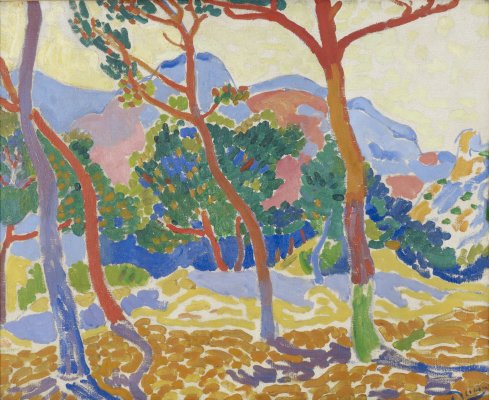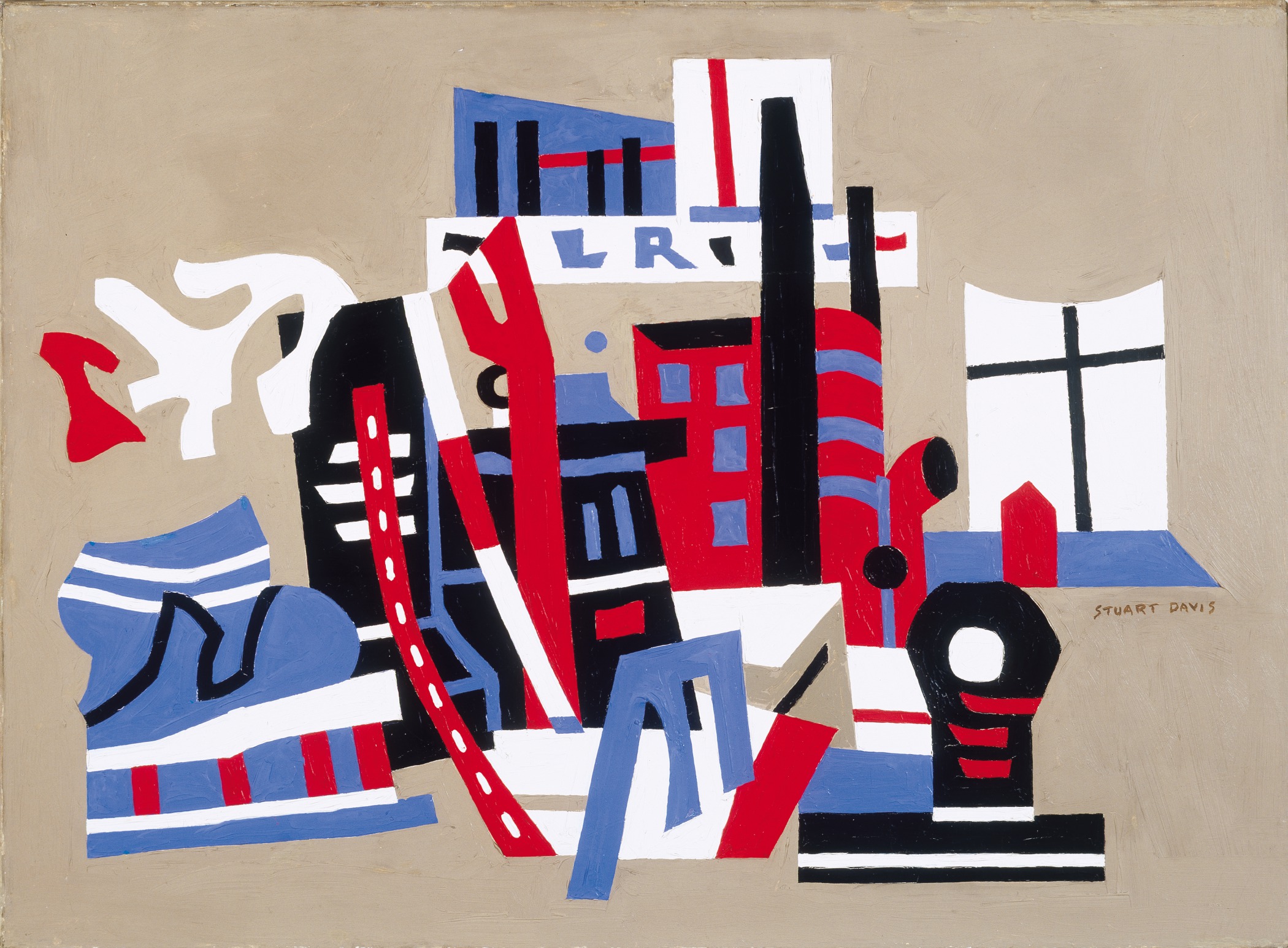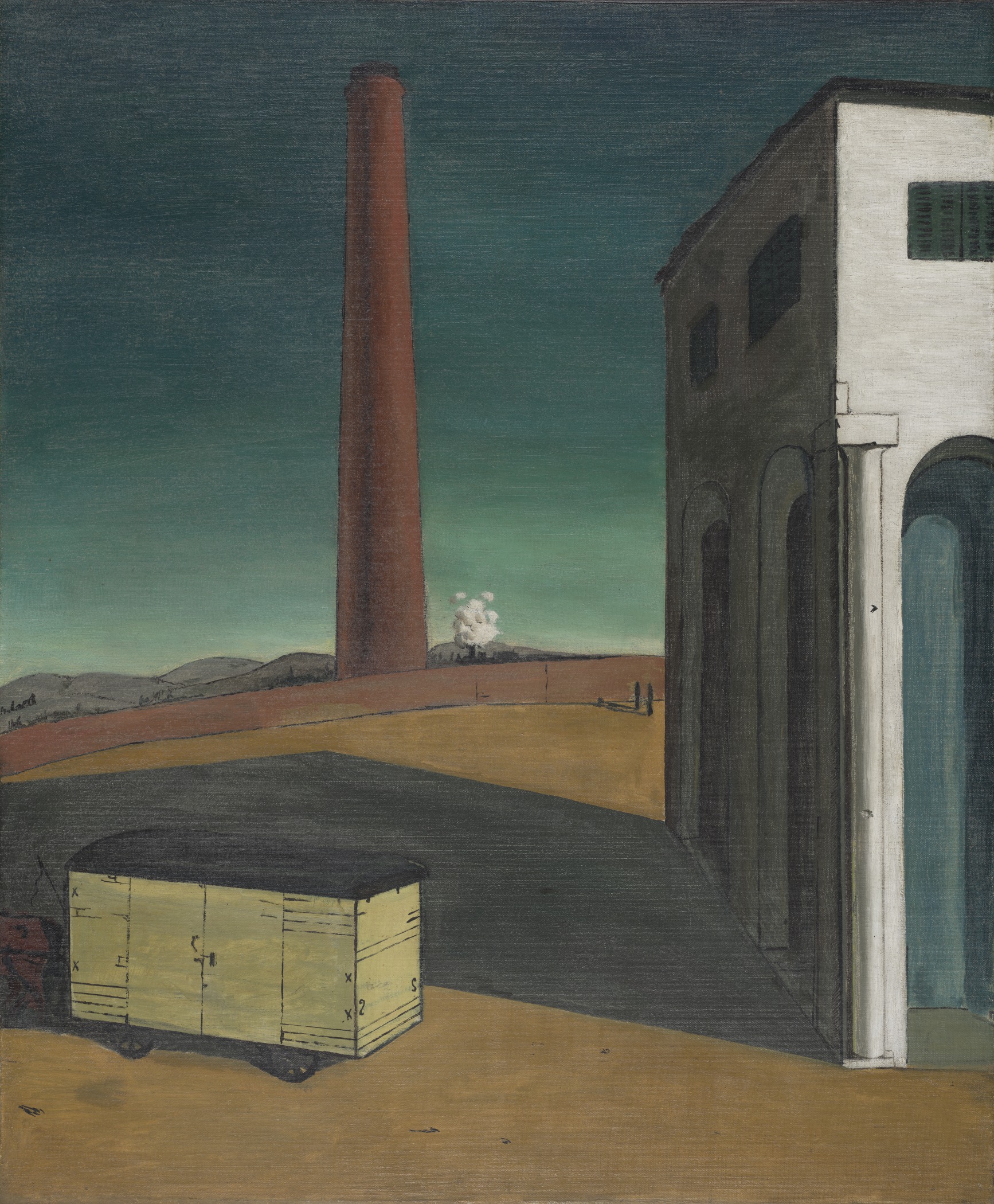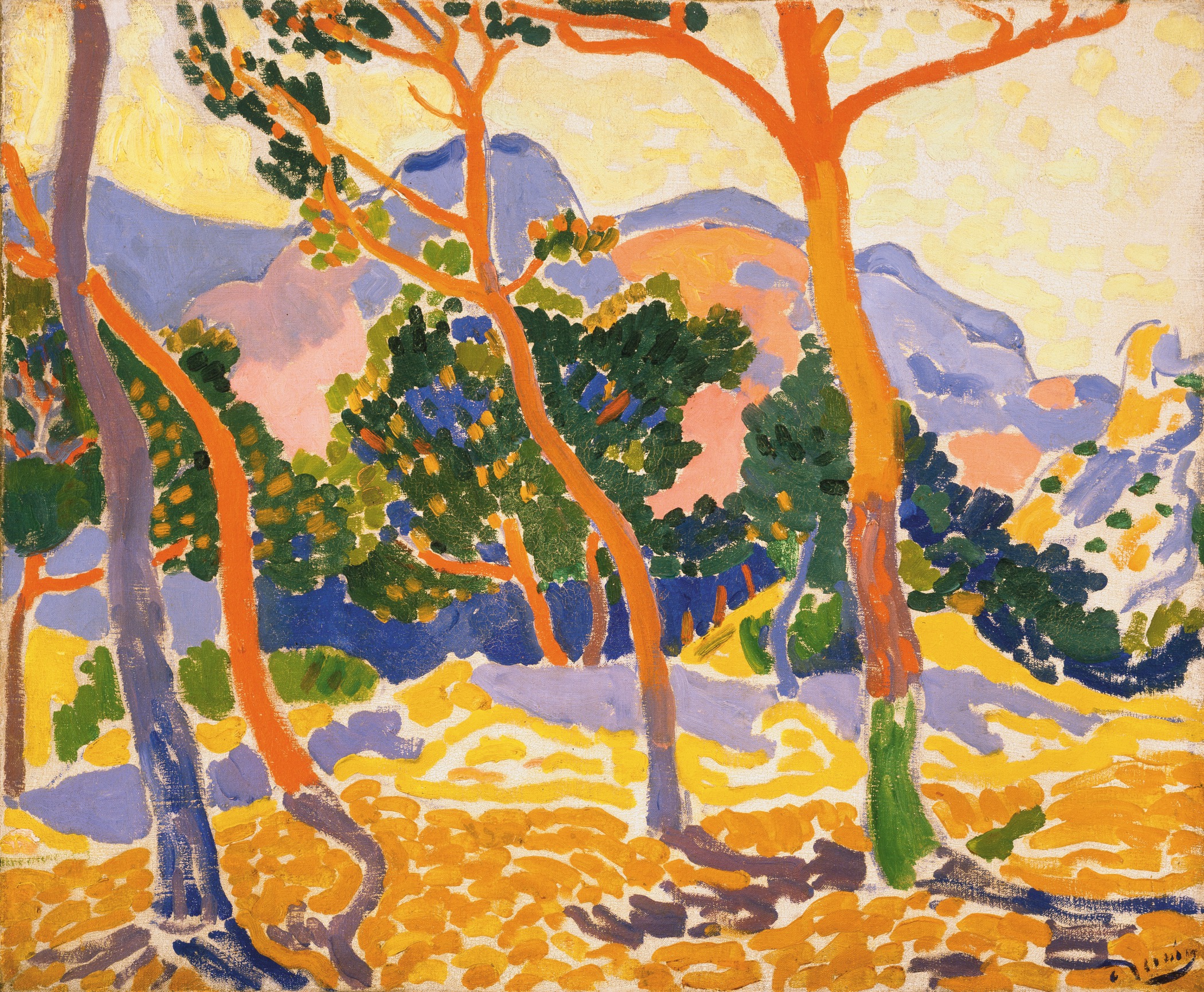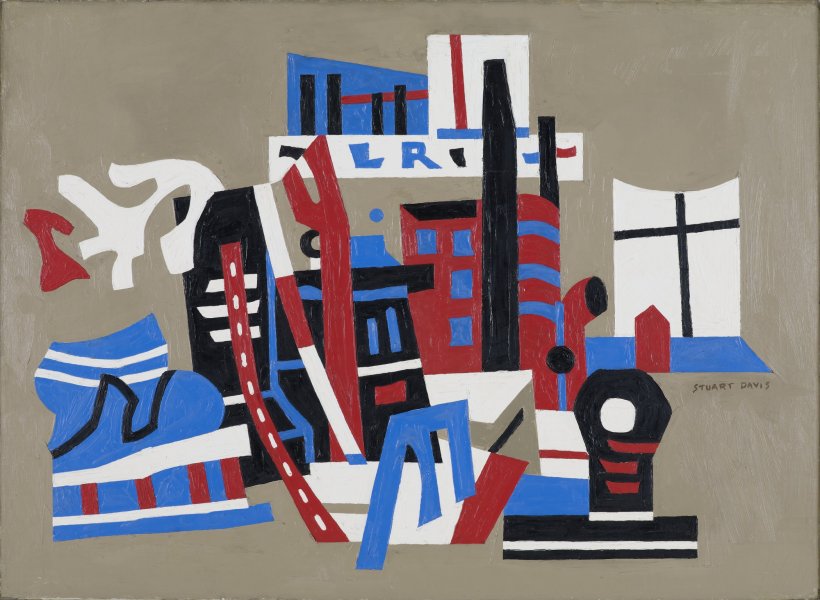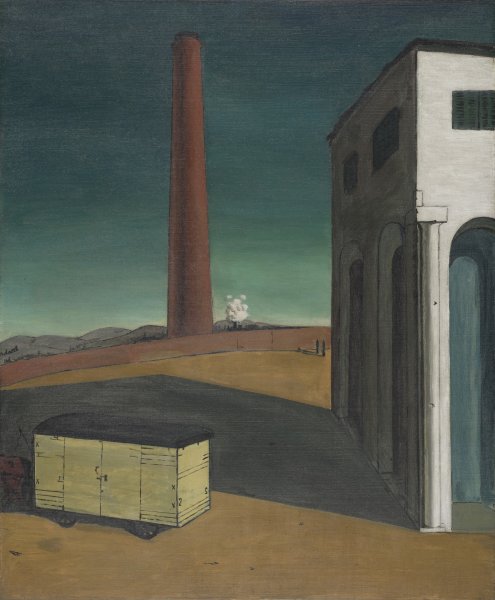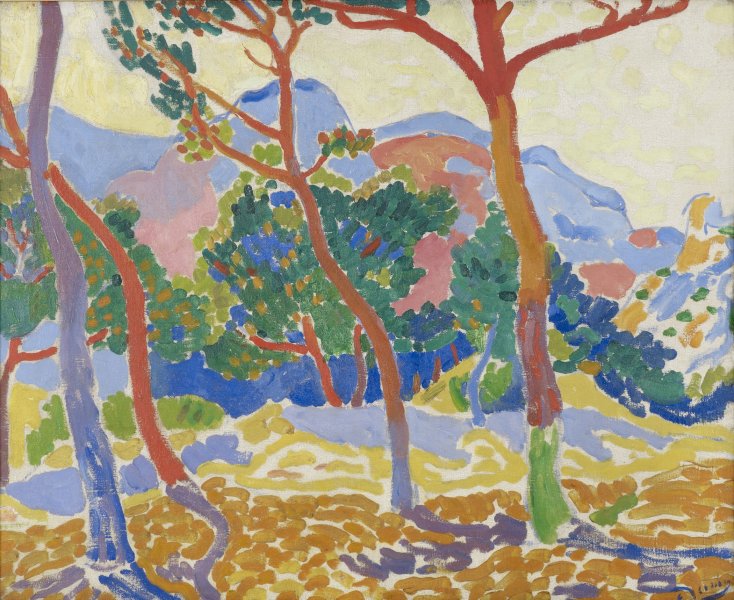About the Artists and Art
Stuart Davis (1892–1964) was born in Philadelphia and raised by artistic parents who both studied at the Philadelphia Academy of Fine Arts. They supported his decision to leave high school to study with the well-known American artist Robert Henri (1865–1929). Henri taught Davis to create art by capturing urban life realistically and often, therefore unglamorously. In 1913, Davis attended the first International Exhibition of Modern Art (also known as the Armory Show) in New York, where he found inspiration in modern European art, especially Cubism. This inspiration, along with Davis’s focus on urban life, can be seen in the Albright-Knox’s work from 1938, New York Waterfront.
Influenced by European art and jazz music, Davis created bright and vivid urban landscape paintings with energetic shapes and lines. Davis was inspired by the hustle and bustle of America’s urban landscape—especially the busy waterfront of New York City that is seen in this painting. Abstract but recognizable shapes—interlocked and layered together—bring energy to the work. Fragments of buildings, smokestacks, piers, and bridges seem to come to life with a visual rhythm similar to the rhythms found in jazz music. In describing this painting, Davis stated, “[It’s] not an image seen from an East River pier with the eyes alone . . . . It calls on the memory and the imagination to make what the eye sees alive again.”
Giorgio de Chirico (1888–1978) was an Italian artist whose paintings inspired many artists throughout Europe, including the Surrealists. He often painted everyday objects in ways that created uncomfortable feelings such as uncertainty, mystery, or fear. The Anguish of Departure, 1913–14, references one of de Chirico’s life experiences from when he was sixteen years old: the death of his father, a railroad engineer. Within the painting are objects related to departure: the train in the background, the two figures possibly saying “goodbye,” and the horse-drawn caravan leaving in the left foreground. The large, imposing space in the painting, along with the distortion of perspective and long, dark shadows contribute to a feeling of anguish, loneliness, and loss. The descriptive title, The Anguish of Departure, invites viewers into the imaginary landscape.
André Derain (1880–1954) was a French painter and sculptor who was guided by the artistic philosophy of expressionism, the expression of emotion through color. In 1905, Derain exhibited at the French Academy of Fine Arts with fellow artist and friend Henri Matisse (French, 1869–1954). The bright, unnatural colors they used led a well-known art critic to call the artists “les Fauves,” or “the wild beasts,” from which the Fauvism movement is named. The Albright-Knox’s painting by Derain from around 1906, The Trees, is an example of a Fauvist landscape. The landscape is composed of bright, unnatural colors and bold brushstrokes.
